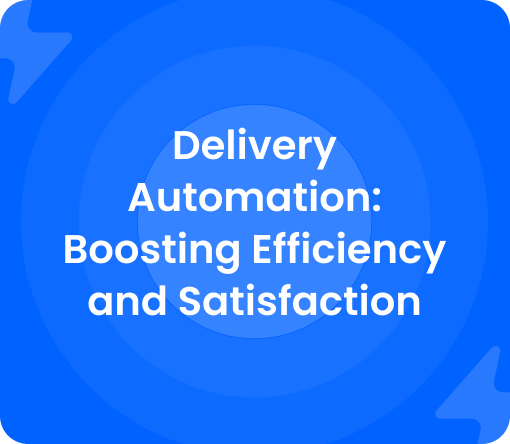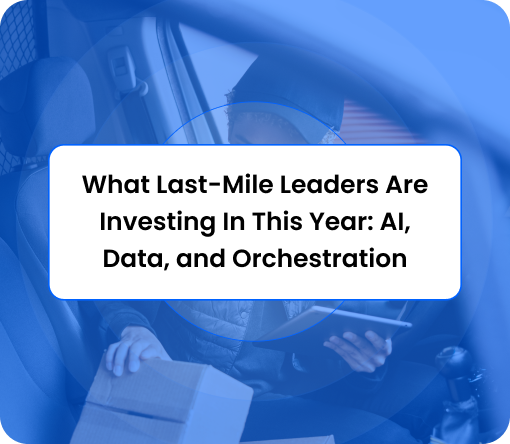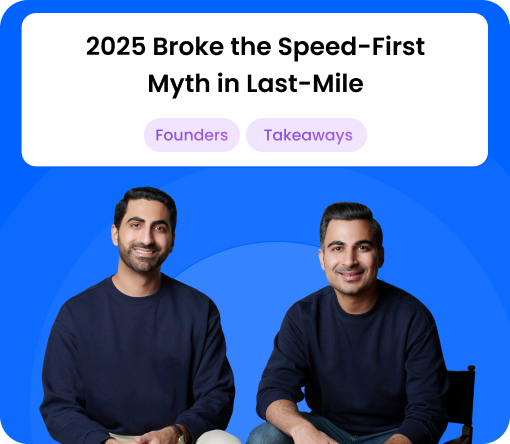Welcome to the first edition of our Hot Take Series, a new monthly blog where we go inside the minds of Burq’s team to unpack what’s happening in the last-mile space, what’s real, what’s hype, and what’s next. To kick things off, we asked the founders to get their raw, unfiltered takes on some of the most talked-about topics in delivery today.
“What’s the biggest myth about last-mile delivery right now?”
Myth #1: Faster delivery = better experience.
Speed matters, but reliability, transparency, and flexibility matter more. What customers really want is:
- Reliability: Deliver it when you said you would.
- Transparency: Let me track my order and alert me if something changes.
- Flexibility: Let me pick a time, reroute mid-route, or opt for a pickup point.
- Consistency: Don’t delight me one day and fail the next.
Myth #2: Owning your own fleet is cheaper.
Many brands assume building an in-house fleet saves money, but in reality, it comes with major overhead: driver churn, vehicle maintenance, compliance headaches, and scheduling complexity. A smarter approach is often flexible access to third-party networks and tools that automate dispatch across providers.
Myth #3: The last mile is just a delivery problem.
It’s not. It’s a tech problem, a data problem, and a customer experience problem. Predictive routing, order recovery, proactive notifications, and fallback workflows all depend on great software, not just vans on the road.
“Where do you think brands are overspending in logistics?”
“The short answer? In all the wrong places.”
- Owning fleets when their volume or complexity doesn’t justify it.
- Relying on one delivery provider and losing flexibility, rate competitiveness, and geographic coverage.
- Overstaffing support teams to manually chase down drivers or delivery issues instead of investing in automation.
The common thread? Trying to solve scalable problems with brute force instead of smarter infrastructure.
“What’s one feature more platforms should offer—but don’t?”
“Auto-detect and decide.”
Too many platforms stop at detection: They see a delay, a failed delivery, or a driver going off route, but don’t do anything about it.
The missing piece? Smart intervention:
- Auto-reroute when a driver cancels
- Notify the customer before they complain
- Adjust delivery logic based on context (perishables vs. non-perishables)
- Escalate to human support only when automation fails
It’s not just about knowing there’s a problem. It’s about recovering before it affects the customer.
“How will customer expectations shift over the next 12 months?”
The bar is rising fast, and not just for speed.
- Predictable > fast: More customers want precise time slots and reliable ETAs.
- Live tracking is the new normal: “Out for delivery” isn’t enough.
- More control: From changing delivery windows mid-route to saving preferences (e.g., “leave at back door”), customers expect to direct the experience.
- Contactless options and visual proof are increasingly standard, not nice-to-haves.
Delivery is becoming more interactive and personalized. Expectations aren’t just rising, they’re evolving.
“What’s a last-mile trend you’re tired of hearing about?”
“Drone delivery.”
It’s not that drones or robots won’t play a role, it’s just that right now, they’re mostly PR stunts. Real-world scale is blocked by issues like:
- Regulatory hurdles
- Weather and terrain
- Security (theft, tampering)
- Urban density (e.g., stairs, apartments)
Meanwhile, basic problems, like rerouting, failed deliveries, or lack of transparency, are still affecting millions of orders every day. Solving the “boring” stuff moves the industry forward way more than flashy moonshots.
“If you were starting a new delivery brand tomorrow, what would you do differently?”
“Build for when things go wrong.”
Most platforms are built for the ideal scenario, where everything goes right. But the real value lies in what happens when it doesn’t:
- Can you recover a failed handoff?
- Can you reroute automatically?
- Can your system detect issues before customers reach out?
That 5–10% of problematic deliveries is where customer trust is built, or lost. That’s where the future of last-mile innovation really lives.
Final Thoughts
The last mile is changing quickly, but not always in the ways people expect. It’s not about flying robots or shaving a few more minutes off every ETA. It’s about solving real operational problems with smarter tools, cleaner data, and a relentless focus on the customer experience.


















%20(6).png)







.png)
%20(36).png)





